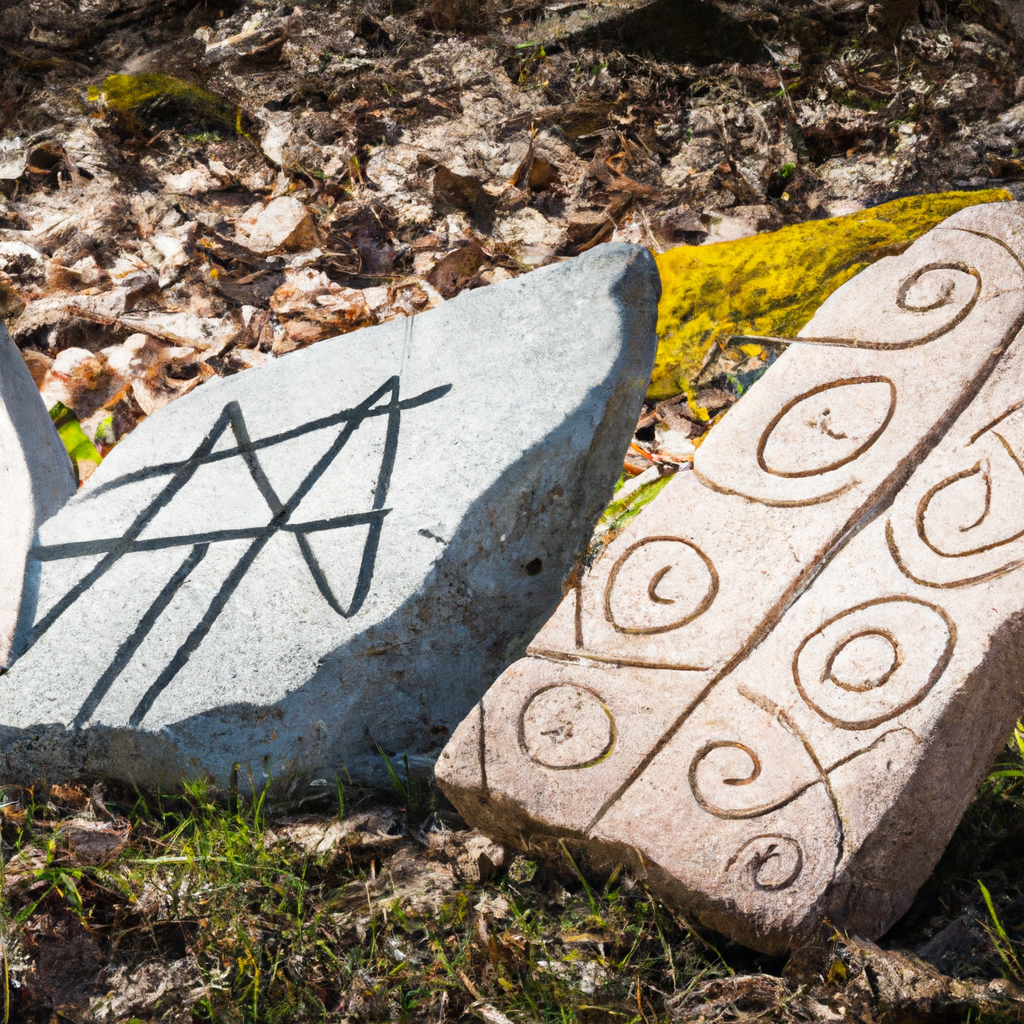The Mystery of Viking Runestones: Unlocking Norse History
When picturing Vikings, our minds often conjure up fierce warriors sailing the seas, wielding their mighty weapons and conquering new lands. But did you know that Vikings also left behind fascinating artifacts that provide us with valuable insights into their lives and culture? One such artifact is the Viking runestone. These ancient inscriptions carved in stone hold within them a captivating story waiting to be unraveled.
What are Viking Runestones?
Viking runestones are large stones that were erected by the Vikings during the Viking Age (approximately AD 793-1066) in Scandinavia. These stones were inscribed with runic alphabets, which were the writing systems used by the Norse people. The inscriptions on runestones varied from simple names and phrases to epic tales of conquests and adventures.
The Purpose of Viking Runestones
Viking runestones served multiple purposes, acting as memorials, commemorative markers, or even grave markers. They were often used to honor deceased loved ones, glorify the achievements of powerful chieftains, or mark significant locations such as trading routes or property boundaries.
Decoding the Inscriptions
Deciphering Viking runestone inscriptions is like solving a centuries-old puzzle. The runic alphabets used in these inscriptions are known as the Elder Futhark, which consists of 24 characters. Each runic character represents a specific sound or letter. These inscriptions are typically read from left to right, and sometimes they even included decorative elements or illustrations.
However, interpreting the exact meaning of runestones can be challenging as the inscriptions often use shorthand phrases or abbreviations. Many inscriptions contain incomplete sentences or missing words, requiring researchers to make educated guesses and rely on contextual clues to fill in the gaps.
The Insights Gained
Despite the complexities, deciphering Viking runestones has led to remarkable insights into Norse history, culture, and mythology. The inscriptions have provided valuable information about significant historical events, such as battles, alliances, and migrations of Viking warriors to new territories.
Some runestones also shed light on the religious beliefs and rituals of the Norse people. They mention Norse gods such as Odin, Thor, and Freyr, and provide clues about ancient Norse cosmology and mythology. These inscriptions have greatly contributed to our understanding of the Viking Age and the role of religion in their society.
Famous Viking Runestones
There are countless runestones scattered throughout Scandinavia, each with its own unique story to tell. Here are a few notable examples:
- The Rök Runestone in Sweden, consisting of the longest known runic inscription, contains a poetic message and references to heroic legends.
- The Jelling Stones in Denmark, erected by King Harald Bluetooth, are considered key symbols of Denmark’s conversion to Christianity.
- The Kensington Runestone in the United States sparked controversy over claims of Viking exploration in North America before Columbus.
Preserving Viking Heritage
Viking runestones are not only historical artifacts but also treasures of cultural heritage. They provide a tangible link to the past and connect us with the fascinating world of the Vikings. Preserving these stones is vital for future generations to continue unraveling the mysteries of the Viking Age and appreciating the rich heritage they left behind.
Thanks to the dedication of archaeologists, linguists, and historians, we can continue to unlock the secrets hidden within these remarkable stones, bringing us closer to understanding the enigmatic Vikings and their extraordinary legacy.
So, the next time you come across a Viking runestone, take a moment to imagine the stories it holds and the wonders it reveals about the daring and adventurous people who once walked the earth as mighty Vikings.
